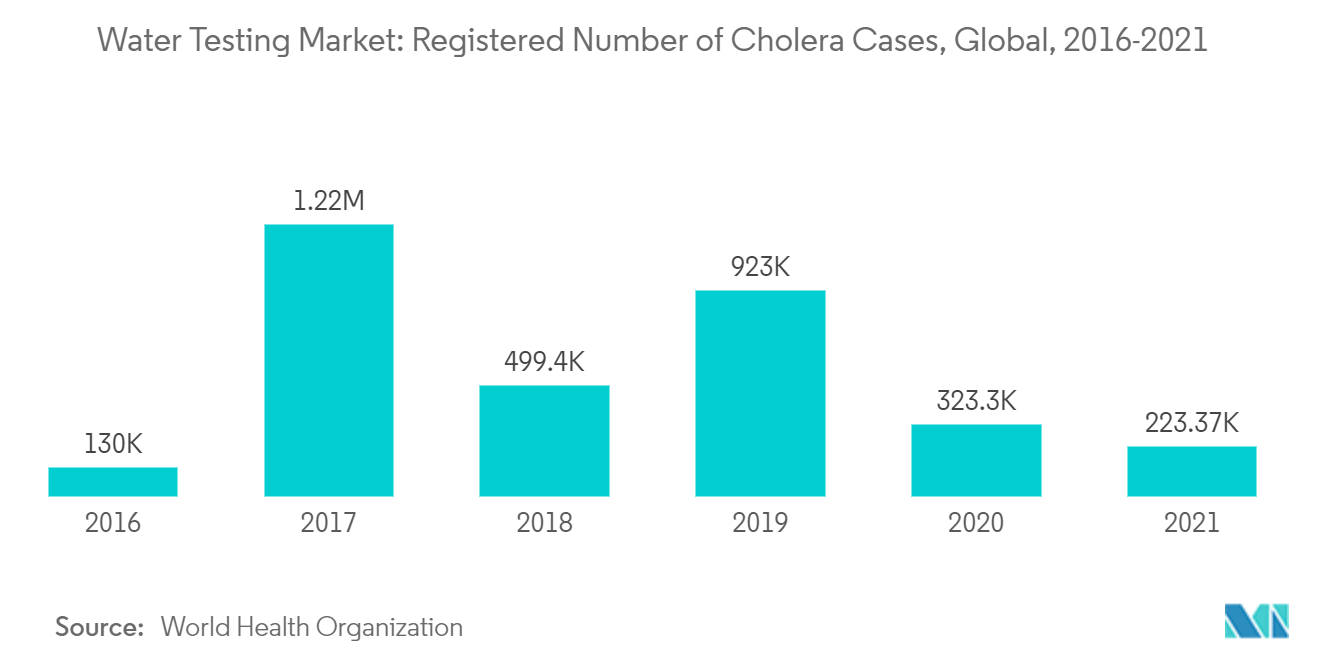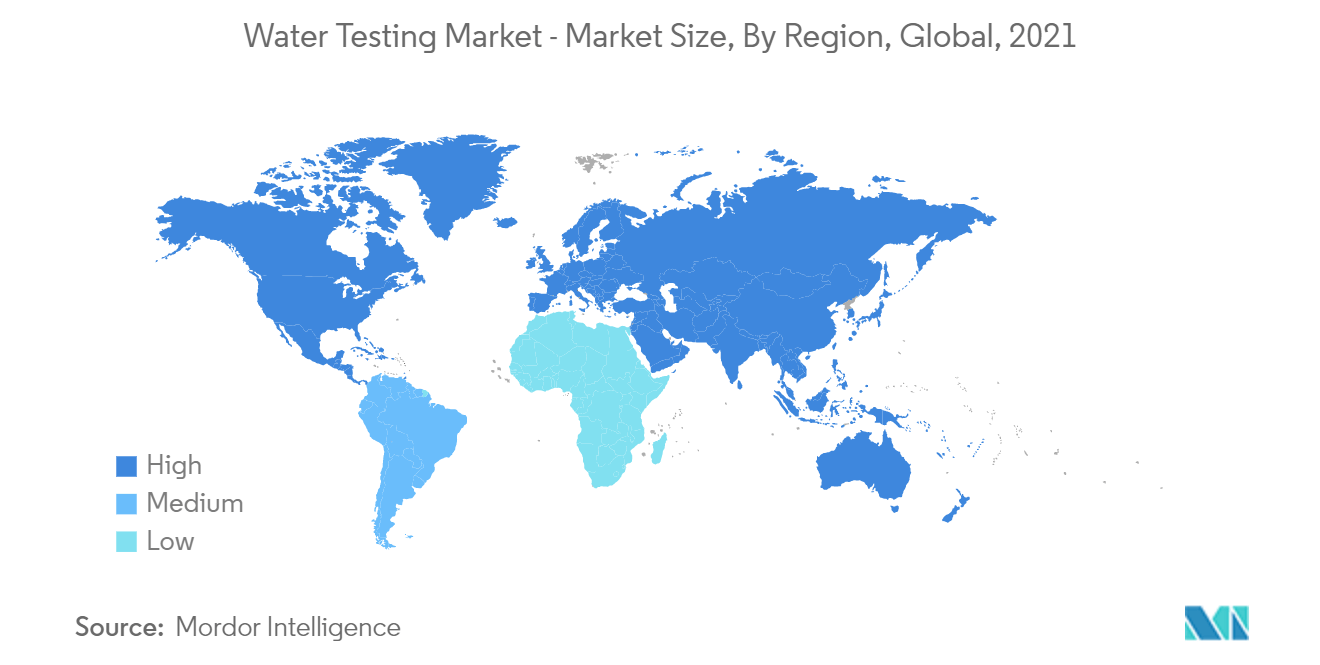Market Trends of Water Testing Industry
This section covers the major market trends shaping the Water Testing Market according to our research experts:
Growing Consumer Interest in Water Safety and Quality
- The rising number of waterborne disease outbreaks, adulteration cases, and toxicity have increased the threat to water safety. According to the Centers for Disease Control and Prevention (CDCP), diseases spread through water affect over 7 million people in the United States every year. In addition, waterborne diseases are responsible for many different types of illnesses, including respiratory illnesses, neurological illnesses, skin problems, gastrointestinal illnesses, and bloodstream infections.
- This stems in part from a rash of prominent 'food scares' in the United States (outbreaks of salmonella and E. Coli (0157:H7) and Europe (notably the spread of Bovine Spongiform Encephalopathy or BSE).
- Also, people are infected by waterborne germs not just when they drink water but also when they breathe in contaminated water droplets or when water gets in their ears or nose. With the increasing incidences of diseases and awareness about waterborne diseases across the world, the current water safety testing market is shifting toward rapid microbiological tests.
- Growing consumer interest in water quality has propelled high technological advancements, thereby driving the water safety testing market in both developing and developed countries. Enhanced surveillance and detection methods have also contributed to the growth of water safety testing scenarios, specifically in developed economies.
- For instance, in October 2021, Intertek announced that it had been appointed by Irish Water to deliver a "Strategic Modelling Study" of Cork Harbour in partnership with Nicholas O'Dwyer Ltd. The study will develop a strategic numerical hydrodynamic and water quality model. With the help of this data, Irish Water will then recommend the infrastructure upgrades required to meet long-term, sustainable environmental standards that are compliant with European law and need the least amount of total expenditure.
- Additionally, World Health Organization (WHO), in 2022, estimated that at least 2 billion people drink water that has been tainted with feces. The biggest threat to the safety of drinking water is microbial contamination brought on by feces contamination. Further according to WHO, Drinking water that has been contaminated by microorganisms that can spread diseases like diarrhea, cholera, dysentery, typhoid, and polio, as well as cause 4,85,000 diarrheal deaths annually. Also, 74% of the world's population, or 5.8 billion people, used a safely managed drinking water service in 2020, meaning one that was on-site, accessible when needed, and uncontaminated.

Asia-Pacific Witnessed Significant Market Growth
- The government of developing countries like India and China is imposing stringent regulations on the usage of Water in various food and beverage products and therefore, increasing the application of tested Water in these industries is the highest. The governments want these companies to set up water testing equipment in their factories and test water according to the fixed norms.
- The increasing health awareness and support efforts by the government for ensuring water safety both for consumption and industrial purposes have given a boost to the market over the last few years. For instance, In June 2022, Researchers from the Indian Institute of Technology (IIT) Kanpur developed an enzyme-substrate medium-based E. coli. Water testing kit that is highly sensitive and can detect the presence or absence of a single E. coli. In drinking water.
- Moreover, the increasing contamination of water on account of increasing urban waste and climatic changes is a serious cause of concern and is expected to propel the water testing market in Asia-Pacific over the forecast period.
- Also, World Health Organization (WHO), aims to strengthen national food control systems to facilitate prevention, detection, and response to public health threats associated with unsafe food in the region. To achieve this, the WHO and its member nations have designated water and sanitation as one of the components of basic healthcare and implemented the WSH method (Water, Health, and Sanitation) in the Southeast Asian region. According to this approach, WHO focuses on water sanitation, and hygiene issues where there is a high health burden and where interventions could have a significant impact.
- The WSH program aims to maximize the health advantages of sustainable water and waste management while minimizing diseases in the area associated with water, sanitation, and waste. The goals are to assist non-health sectors in recognizing and managing the health implications of their actions, as well as to support the health sector and other sectors in effectively tackling the illness burden associated with Water.


